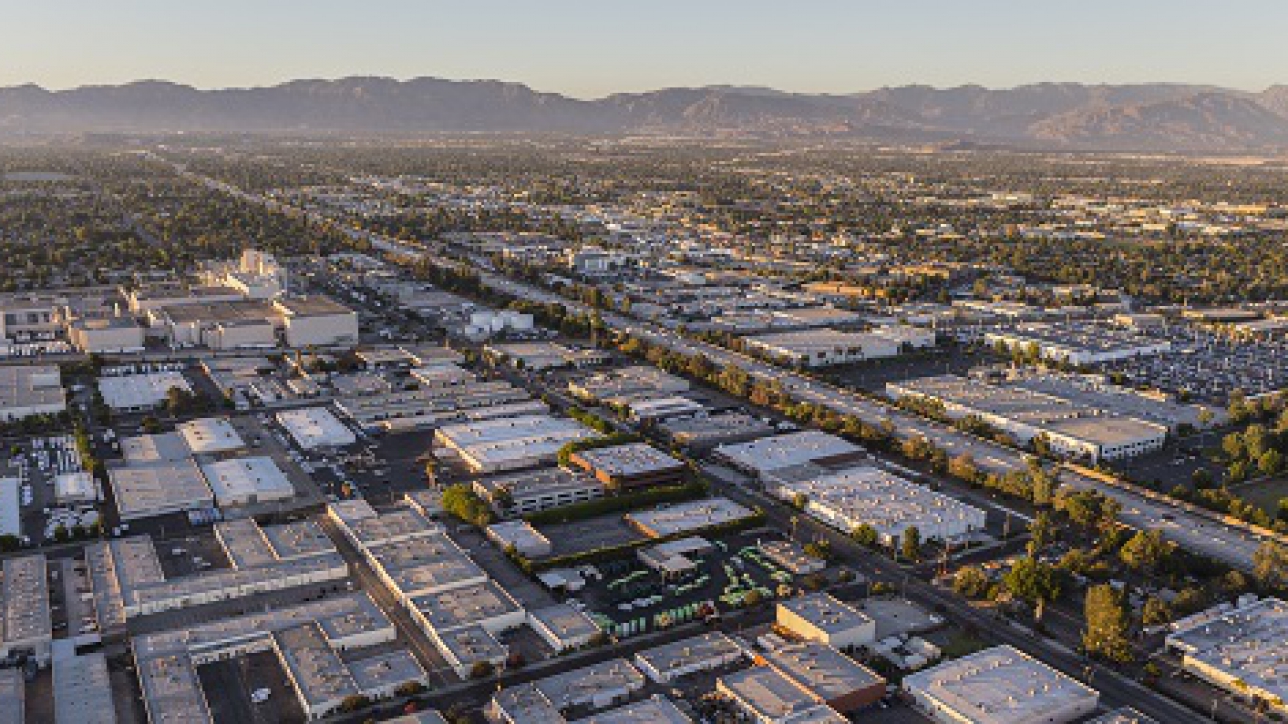THE GOOD AND THE CHALLENGES – BREAKING DOWN THE INLAND EMPIRE
Surrounded by mountain ranges and hills, the Inland Empire (IE) region of Southern California is the 13th-largest metropolitan statistical area in the United States, as well as one of the fastest-growing, according to data from the University of California-Riverside School of Business’ Center for Economic Forecasting and Development. The region is east of Los Angeles, consists of San Bernardino and Riverside Counties, and sprawls over 27,000 square miles, containing a population of approximately 4 million people.
Known predominantly as home to the Port of Los Angeles, the IE’s history is steeped in agriculture. These days, it mixes suburban with rural, and employs approximately 1.1 million in the distribution, tourism and commercial development sectors. The Port of Los Angeles reported that 9.3 million 20-foot equivalent units (TEUs) passed through its docks in 2017, making it the #1 container port in the United States, by volume. The figure broke the Port’s 2016 cargo record of 8.8 million TEUs.
Logistics and e-commerce have been driving demand for commercial real estate and employment, with reports noting that 2018 will bring more of the same. However, the challenges of housing, combined with a lack of a true urban center could put a dent in the IE’s good news.
The Positive Inland Empire
The “Inland Empire Regional Intelligence Report,” released by the UC-Riverside Center for Economic Forecasting and Development noted that, in 2017, the region experienced overall economic expansion, with both household employment and the region’s labor force growing. “Employment in the Inland Empire is growing faster than elsewhere in the state because local population growth is directly leading to new business and job creation,” report analysts said.
Analysts also pointed out that, from 2016-2017, the populations of Riverside and San Bernardino counties expanded by 1.6% and 1.1%, respectively. This outpaced Los Angles County (0.6%) and Orange County (0.7%), as well as the state, as a whole (0.9%). Meanwhile, the Bureau of Labor Statistics noted that the Riverside-San Bernardino-Ontario MSA’s job growth was 3.2%, as of November 2017, with unemployment at 4.1%.
Also on the rise is demand for industrial space, thanks to the logistics and R&D sectors. In numbers terms, industrial vacancy was at 4.1%, with the average asking rent at $0.63 per square foot, according to Cushman & Wakefield’s Industrial Q4 2017 “Marketbeat” report. The Cushman & Wakefield analysts’ outlook is for stabilized leasing activity and absorption in 2018, with market fundamentals remaining strong.
Meanwhile, the company’s Q4 2017 office information reported an 8.8% vacancy at the end of the year, with the average asking rent increasing to $1.85 per square foot. Cushman & Wakefield indicated that lease growth among office product has been steady since the recession. In the next year, a lack of new inventory could continue exerting pressure on vacancies, while boosting absorption and rents.
With Good News, Comes Challenges
The good news is that IE is attracting many people, partly because of jobs, and partly, as Scott Beyer with The Market Urbanism Report, said, due to Los Angeles’ anti-growth climate. The not-so-good news is that there still isn’t enough housing for all of residents. Though it’s true that more houses and apartments are being built, the combination of demand and increased employment levels means that “considerably more building over several years will be necessary to alleviate Southern California’s need for additional housing.”
Another UC-Riverside report, this one dubbed “Job Concentration and the Inland Empire,” brings up another concern, this one involving the lack of any kind of specific urban core in the IE. Though there is a “downtown Riverside,” UC-Riverside authors explain that a high-density CBD is missing. “High-income sectors, such as professional services, finance and information technology tend to be clustered largely in areas with high job density,” the report’s authors wrote, adding that the jobs mentioned tend to offer higher wages.
Adding to the problem is that simply putting some kind of downtown cluster in Oxnard or Rancho Cucamonga sounds easier than it actually is. The UC-Riverside report noted that infrastructure investment would be necessary, along with “altering local rules that discourage the high-density growth.” While logistics and warehouse job creation are great, these tend to offer lower salaries.
The Next Level
The IE is taking center stage for a variety of reasons that range from job growth, to the Port of Los Angeles, to its mountains and beaches. The important issue here, however, is that the region’s leaders understand how to handle population and economic growth, so that the IE can remain an attractive center for jobs and people.

